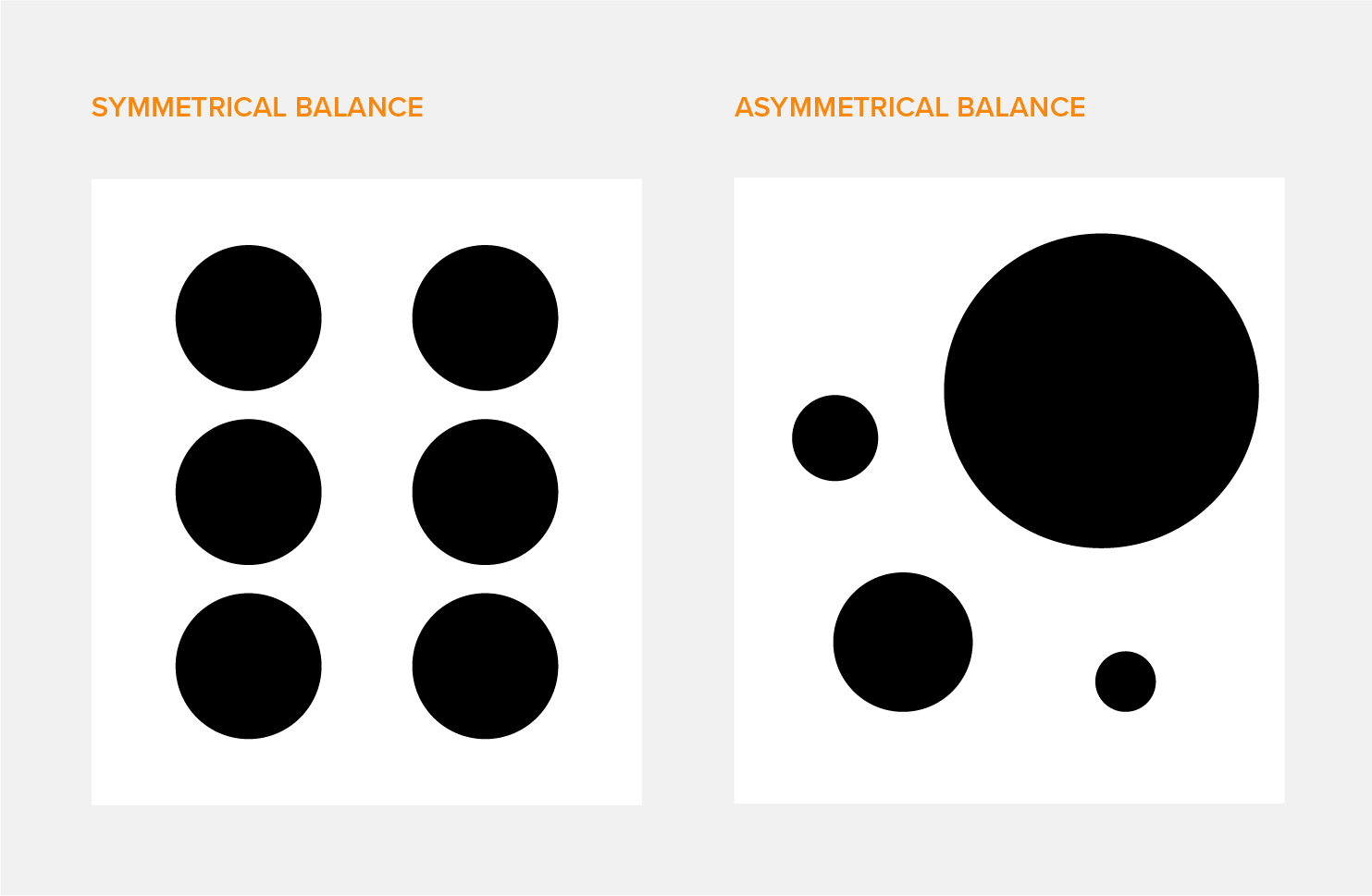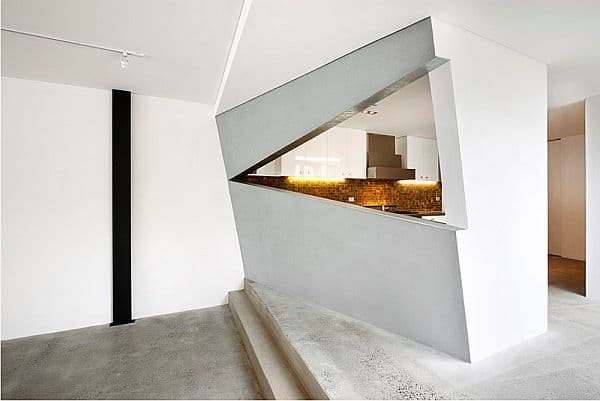Table Of Content

The contrasting colors in soft pink, intense green and bright orange balance each other out in different ways on every page. Visual balance on this document template is well achieved using asymmetry on every page. In illustration, asymmetrical balance is achievable when laying out compositions of the elements. Busy sections balance out with empty areas, gradients balance each other with backgrounds and textures. In this guide, we’ll look at examples of asymmetrical balance and tips on how to achieve it.
Literal asymmetric balance

For instance, imagine a bedroom with a bed positioned off-center, with a large floor lamp on one side and a small side table with a vase of flowers on the other. Despite the asymmetry, the space feels harmonious because the visual weight of the objects is balanced. By using asymmetrical design, you can create a unique and captivating space that feels both comfortable and visually intriguing. Asymmetrical designs captivate the human psyche by playing with visual weights, objects of varying heights, and strategically crafted focal points. Unlike symmetrical layouts, which can feel predictable and bland, asymmetry introduces an element of surprise that engages and maintains attention. Asymmetry in design is all about achieving balance without relying on perfect symmetry.
SYMMETRICAL BALANCE
Symmetry (or lack thereof) can be a powerful tool in the designer’s toolbox. Symmetry naturally evokes a sense of orderliness and stability while asymmetry, on the other hand, can help designers achieve uniqueness and character in design. Combining the two helps create designs that are unique and memorable to viewers.
Selected Images
For example, Van Gogh’s The Starry Night is an excellent demonstration of leveraging asymmetrical balance. Van Gogh has used very different shapes and objects on either side of his work. Yet he manages to provide a sense of balance by playing with the size and color of these elements. Scattering visual objects randomly may do the exact opposite of what you require, so tread carefully. In the dynamic and shifting design world, asymmetrical balance is an invaluable tool. Mastering this principle opens the door to creating captivating designs that impress potential clients and set your work apart.
You can have symmetrical forms in an asymmetrically balanced composition and vice versa. A photograph is at the center and off to the left in this template, creating a visual perspective. The blue and green diagonal shapes reinforce the idea of perspective and asymmetrical balance. Diagonal lines and shapes are the best tools for a perspective emphasis on balance.
Implementing Asymmetry in Contemporary Spaces
It is to be remembered that darker and larger objects always have a heavier weight than small and lighter objects. Asymmetrical designs can attract more attention as they use complex relationships between two or more elements to create their composition. There is a harmonious balance that is achieved by using Symmetrical balance, but at times it becomes a little passive.
Gaganauts' ground suit designed by NIFT Bengaluru team has asymmetry as theme - The Times of India
Gaganauts' ground suit designed by NIFT Bengaluru team has asymmetry as theme.
Posted: Thu, 29 Feb 2024 08:00:00 GMT [source]
For example, a smooth, minimalist area may be the perfect counterpart to a detailed, textured area. Varying textures lends a sense of visual interest and organic asymmetry to design work. One of the primary principles of design, balance is to the visual world what gravity is to the physical world — it holds it all together. That’s why solid knowledge of composition and symmetric and asymmetric balance concepts is vital for creating high-quality, converting designs. Both are calls to action and both break the symmetry, calling extra attention to themselves.
Mosaic balance (or crystallographic balance) results from balanced chaos. The composition lacks distinct focal points, and the elements share a uniform emphasis. The downside of symmetrical balance is that it’s static and sometimes regarded as boring. Because half of the composition mirrors the other half, at least half of the composition will be rather predictable. Knowing how to use symmetry and asymmetry properly is the key to communicating your story through graphic design. By harnessing the principle of good balance, you can turn ordinary designs into something spectacular and memorable.
Mosaic balance
The individual parts contribute to their sum but don’t try to become the sum. However, for some people, stability might be predictable and boring. The Google Search page is a good example of a symmetrical layout with a single interaction object.
Above it, the title of the catalog has a much simpler background of wall and light shining upon it. Notice how the primary color is mustard yellow, creating a unifying sense to the overall design. The header in the center leans towards the left and balances with the gray rectangle on the right.
However, if we place two persons of different weights on the see-saw, one smaller and one larger, the beam of the see-saw would be off balance. With a commitment to quality content for the design community. Symmetry is usually seen as beautiful and harmonized; however, it can also be seen as static and dull. Asymmetry tends to be more interesting and dynamic, despite not being regarded as intrinsically beautiful. Here, the force of the larger person is reduced by being closer to the fulcrum on which the seesaw balances. I’ll trust you’ve been on a seesaw before or at least watched others play on one and that you have a pretty good sense of what’s going on.
Michelangelo draws your focus strategically and uses asymmetrical balance to tell a story. To understand balance, think of each element in your design as having a visual weight. Each aspect of your design — tone, object, shape, and color — has a different capacity to attract the attention of the viewer. This type of symmetry occurs when we repeatedly use the same type of visual elements in different parts of the composition. Repetition is what carries the symmetry, and the best example of this type of symmetry is – the fence post. This form of symmetry is perfect for creating sound, speed, and action in your design.
We touched on this briefly before — each color has a unique visual weight. For example, colors such as Red or Orange capture our attention more than Blue or Brown. One red boat, using a heavy color, is being countered by four boats with a neutral color blue. Now, two of the prominent approaches used to create this balance are symmetrical design and asymmetrical design.
Schindler rendered incorrectly the name of a Frank Lloyd Wright landmark, a scale model of which Shamshiri keeps in her house. Schindler’s fascination with these dwellings resonates in one of his final masterpieces, wedged high above Laurel Canyon in the Hollywood Hills. The house — at 3,500 square feet one of Schindler’s largest — hugs the land’s contours like a giant V, the angle nestled into rock.
While the definition of asymmetry is the lack of symmetry, it is not a lack of balance, as some wrongly assume—designs that lack symmetry still need to be balanced. Mixing and matching furniture is an excellent way to create asymmetrical balance in interior design. When you have an awkward room, selecting furniture pieces with varying shapes, sizes, and styles can help you achieve balance without resorting to a rigid, symmetrical layout. When web designers use the term ‘dynamic,’ what they are referring to is a design in which the viewer’s eye is moved around and through the design. That’s why so many sports brands use asymmetrical layouts and asymmetry in individual elements (such as the logo). A key principle in design, asymmetrical balance employs unequal visual weights to achieve harmony within a composition.

No comments:
Post a Comment